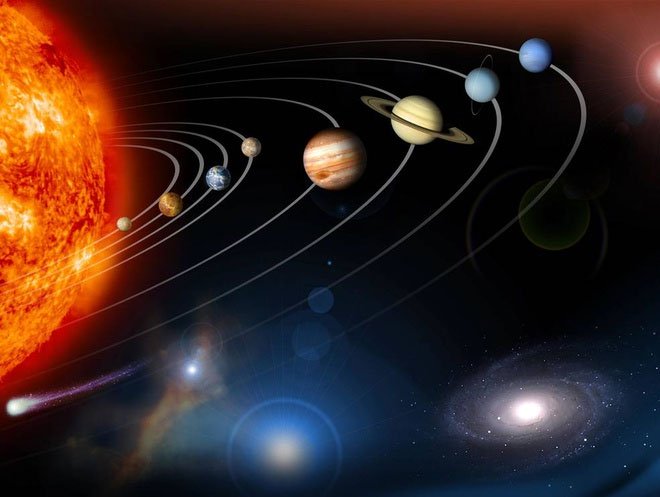We almost had the second Sun
Most star systems in the universe have two or three stars. However, the Solar System has only one star.
The solar system was able to have two stars, but in the end it exists as the present is the only star. The planet many hypotheses that could become the second star is Jupiter , the largest planet in the Solar System.
Jupiter has a circumference of 142,984 km around the equator, and its mass is 2.5 times larger than all other planets combined. Compared to Earth, the volume of Jupiter is 1,321 times larger.

Jupiter is the largest planet in the Solar System. (Photo: NASA / JPL).
Jupiter is a gas planet. It has no solid surface but only a rocky core surrounded by helium and hydrogen. It is estimated that the planet's atmosphere consists of 90% hydrogen and 10% helium.
Because of its massive gas structure and mass, Jupiter is often referred to as a "star ", which is nearly eligible to become a star.
The only thing that Jupiter lacks is mass. The larger the mass of the planet, the higher the pressure and temperature inside its core, and when it reaches the mark it can trigger fusion reactions like the Sun itself. According to an article published in Astronomy magazine, Moc Tinh "only" need to be about 75 times larger than that to be able to become a star, even just a dwarf, that is, relatively small size, low brightness.
Although the mass is more than 75 times that sounds like a very large number, this can happen if some material in the formation phase of the Solar System goes "astray". In that mess, instead of being swept toward other planets, matter could have been drawn towards Jupiter. That chaos allows planets to grow exponentially.
"If the Solar System were a little different, there was more material in the region of the newly formed Solar Disc, some of the gas would probably spit out and eventually could make Jupiter the second Sun. This hypothesis is also not in conflict with the formation of other stars, but will make the possibility of life on Earth much lower. perfect point for having enough temperature to hold water in liquid form, rather than evaporation or freezing, " wrote astronomer Paul Sutter of Ohio University in Universe Today.

Jupiter "just" needs to be 75-80 times larger than it is to be able to become a star. (Photo: NASA / JPL).
If not enough to reach the level of red dwarfs, stars with the lowest mass, Jupiter is also close to the brown dwarf standard. These are not large enough bodies to fuse hydrogen into helium and have a fusion reaction, but still fuse the deuterium isotope.
"Although the exact number is a little hard to estimate, there is still a possibility that a brown dwarf would be formed about 13 times the mass of Jupiter , " Dr. Alastair Gunn from the University of Manchester told BBC Science Focus.
With a little difference in the formation process, our Solar System was able to have up to two stars. However, it is fortunate that it did not happen, otherwise life on Earth would not have appeared.
- Close up of super bikes with a speed of 144km / h
- 64 GB flash device threatens the existence of a hard drive
- Lock all applications in the computer
- Detect new abnormal chromosomes
- Shark microbes do not protect against cancer
- Crazy experiments
- Half of the population may face a food crisis
- Video: Dance of the beautiful light of the drone
- Declaring Kyoto to deal with climate change
- Canada started drawing seabed maps around the North Pole
- Discovered frogs with feathers and sharpness
- Lola tree (horse chestnut) - Alsophile spinulosa
 Van Allen's belt and evidence that the Apollo 11 mission to the Moon was myth
Van Allen's belt and evidence that the Apollo 11 mission to the Moon was myth The levels of civilization in the universe (Kardashev scale)
The levels of civilization in the universe (Kardashev scale) Today Mars, the sun and the Earth are aligned
Today Mars, the sun and the Earth are aligned The Amazon owner announced a secret plan to build a space base for thousands of people
The Amazon owner announced a secret plan to build a space base for thousands of people